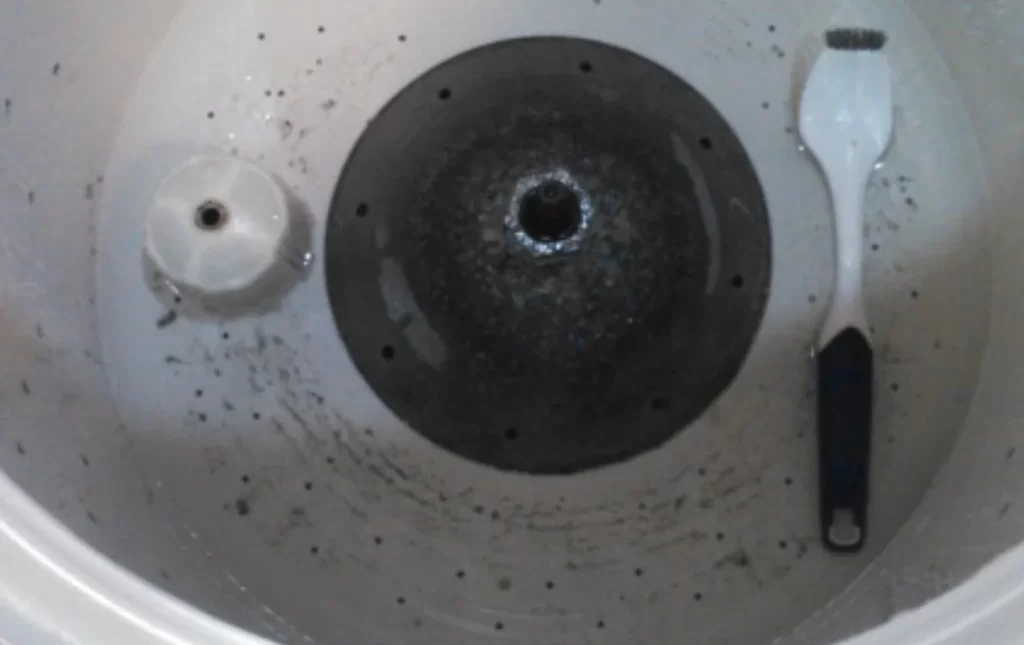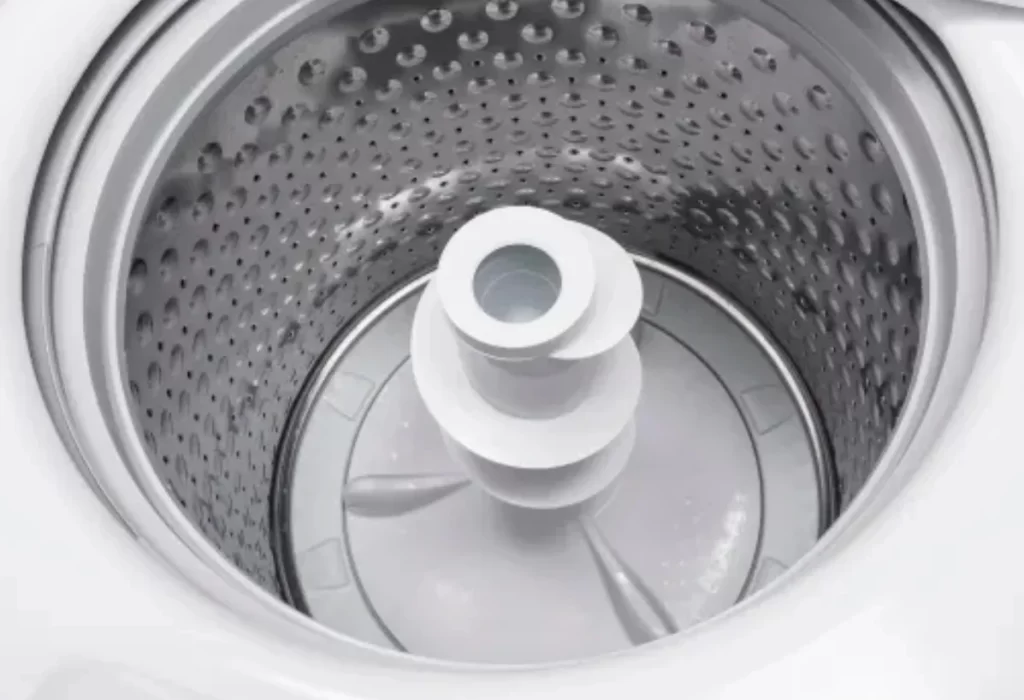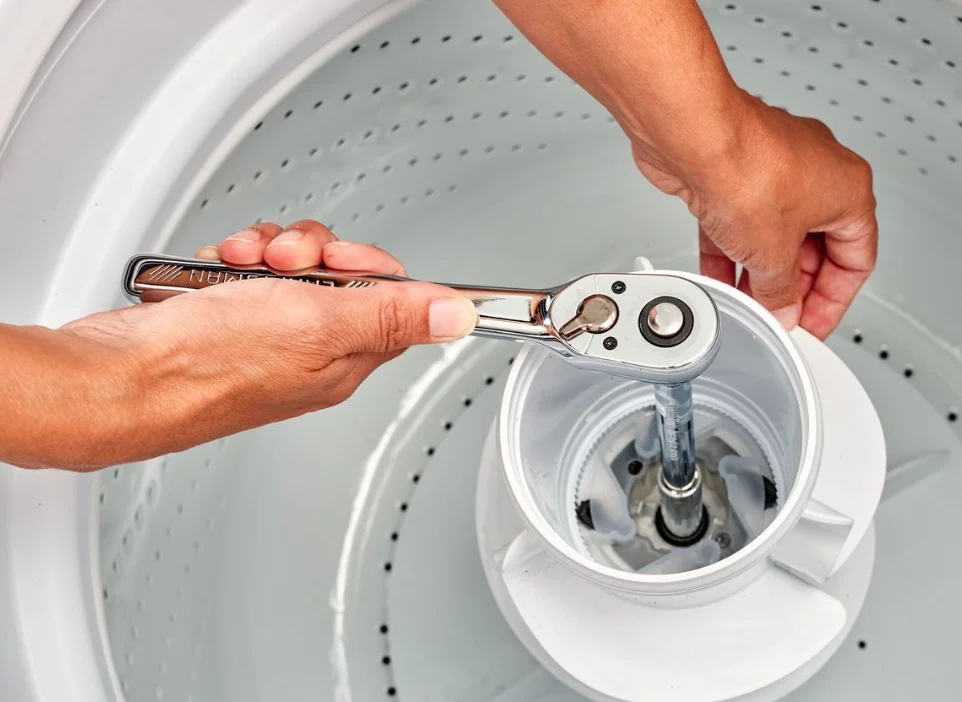General Electric (GE) produces high-quality, dependable appliances, including washing machines. GE washing machines come in various styles and models, but a common feature in many of them is the agitator. The agitator is a crucial component that spins and shakes the laundry in the drum, helping to distribute detergent evenly and ensure a thorough clean.
However, sometimes issues can arise with the agitator. Clothes might get wrapped around it, or it may stop working, requiring repair or replacement. This comprehensive guide will provide you with all the information you need to handle various situations involving the agitator in your GE washing machine.
- Understanding the Role of the Agitator in Your GE Washing Machine
- How to Remove the Agitator from a GE Washing Machine
- Dealing with Clothes Wrapped Around the Agitator in a GE Washing Machine
- Repairing the Agitator in a GE Washing Machine
- Replacing the Agitator in a GE Washing Machine
- How to Remove the Pump from an Old-Style Agitator GE Washing Machine
- No Agitator GE Washing Machine
- How to Clean the Agitator in a GE Washing Machine
Understanding the Role of the Agitator in Your GE Washing Machine
The agitator is the spindle located in the middle of the washing machine’s drum. It plays a vital role in the washing process by moving the clothes around, allowing the detergent to penetrate the fabric and dislodge dirt. The agitator’s design can vary between different GE washing machine models. Some models feature a single-piece agitator, while others have a dual-action agitator that not only rotates but also moves up and down to provide a more vigorous wash.
How to Remove the Agitator from a GE Washing Machine
In some situations, you might need to remove the agitator from your GE washing machine. This could be necessary if the agitator is malfunctioning, if something is caught beneath it, or if you need to replace it. Here are the general steps to remove an agitator from a GE washing machine:
- Unplug the washing machine: For safety reasons, always disconnect your washing machine from the power source before working on it.
- Remove the fabric softener dispenser: The dispenser is typically located at the top of the agitator. It can usually be pulled off with a firm upward tug.
- Remove the agitator cap: Some models have a cap that covers the agitator bolt. You can remove this with a flat-head screwdriver.
- Loosen the agitator bolt: Use a socket wrench to loosen the bolt that secures the agitator to the drum.
- Lift out the agitator: Once the bolt is loosened, you can lift the agitator out of the drum. It might require a bit of force to pull it out.
Please note, the specific process can vary between different models. For instance, to remove the agitator from a GE washing machine model WJRR4170E4WW, the steps remain largely the same, but you might need a specific tool size to remove the agitator bolt.
Here is a video from Bens Appliances and Junk Channel explain how to remove the GE Washer agitator and access the GE Washer Hub:
Dealing with Clothes Wrapped Around the Agitator in a GE Washing Machine
It’s not uncommon for clothes to get wrapped around the agitator of a washing machine, particularly in models like the WSLS1100HOWW. This can occur if the clothes are not loaded properly or if the machine is overloaded. If you notice that your clothes are getting tangled, follow these steps:
- Stop the washing machine: If the machine is running, stop the cycle immediately.
- Untangle the clothes: Carefully untangle the clothes from the agitator. Be gentle to avoid damaging your clothes or the agitator.
- Check for damages: Check the agitator for any damages that might be causing the clothes to tangle. If the fins on the agitator are broken or damaged, they can catch on the clothes and cause them to wrap around the agitator.

Repairing the Agitator in a GE Washing Machine
If your agitator is not working properly, it might need to be repaired. Common issues include the agitator not moving, moving too slowly, or making strange noises. Here’s a basic guide on how to repair the agitator:
- Determine the problem: Identify the issue with the agitator. Is it not spinning at all, spinning too slowly, or making noise? The answer will guide your repair efforts.
- Check the agitator dogs: These are small components inside the agitator that allow it to rotate in one direction. If they’re worn out or broken, they will need to be replaced.
- Inspect the agitator coupler: The agitator coupler connects the agitator to the drive shaft. If it’s damaged, the agitator won’t spin. You’ll need to remove the agitator to check the coupler.
- Check the drive belt: If the drive belt is broken or worn out, it can affect the agitator’s function. You’ll need to access the bottom of the machine to inspect the drive belt.
Replacing the Agitator in a GE Washing Machine
If your agitator is damaged beyond repair, it might need to be replaced.To replace the agitator in your GE washing machine, you will need a new agitator that matches your model. You can typically order these directly from GE or from a third-party supplier. Here are the steps to replace the agitator:
- Remove the old agitator: Follow the steps outlined above to remove the old agitator.
- Install the new agitator: Place the new agitator in the drum and align it with the drive shaft. Then, secure it with the agitator bolt.
- Replace the cap and dispenser: If your model has an agitator cap, place it back on the agitator. Then, replace the fabric softener dispenser.
How to Remove the Pump from an Old-Style Agitator GE Washing Machine
If you have an older GE washing machine, you might find that the pump is located beneath the agitator. Here’s how to remove the pump:
- Remove the agitator: Using the steps above, remove the agitator from the washing machine.
- Access the pump: Once the agitator is removed, you should be able to see the pump. It’s usually located at the bottom of the drum.
- Disconnect the hoses: There are two hoses connected to the pump—one that brings water in and another that pumps it out. Disconnect both hoses.
- Remove the pump: The pump is typically held in place by a couple of screws. Remove these screws, and then you can lift the pump out of the machine.

No Agitator GE Washing Machine
GE also makes washing machines without agitators. These models have a drum that tumbles the clothes rather than an agitator that moves them around. The advantage of a no agitator GE washing machine is that it can often hold more clothes and is gentler on fabrics.
However, these machines can still experience issues. The drum might not spin, or the machine might not drain properly. If you’re experiencing issues with a no agitator GE washing machine, the solutions will be different than those for a machine with an agitator. You might need to inspect the drive belt, the motor, or the drain pump, depending on the issue.
How to Clean the Agitator in a GE Washing Machine
Regular maintenance of your GE washing machine includes cleaning the agitator. Over time, detergent and fabric softener can build up on the agitator, reducing its effectiveness. Here’s how to clean it:
- Remove the agitator: Using the steps outlined above, remove the agitator from the machine.
- Soak the agitator: Fill a tub or large bucket with warm water and a mild detergent. Place the agitator in the tub and let it soak for an hour.
- Scrub the agitator: After soaking, use a soft brush to scrub away any residue or buildup. Pay special attention to the fins and the top of the agitator, where fabric softener tends to accumulate.
- Rinse and dry: Rinse the agitator thoroughly and then let it dry completely before reinstalling it in the machine.
In conclusion, understanding the role of the agitator in your GE washing machine can help you better maintain and troubleshoot your appliance. Whether you’re dealing with clothes getting wrapped around the agitator, needing to repair or replace it, or just performing routine cleaning, this guide provides you with the knowledge you need to keep your GE washing machine in top working condition. Always remember to consult your machine’s user manual or reach out to a professional if you’re unsure about any procedure.
